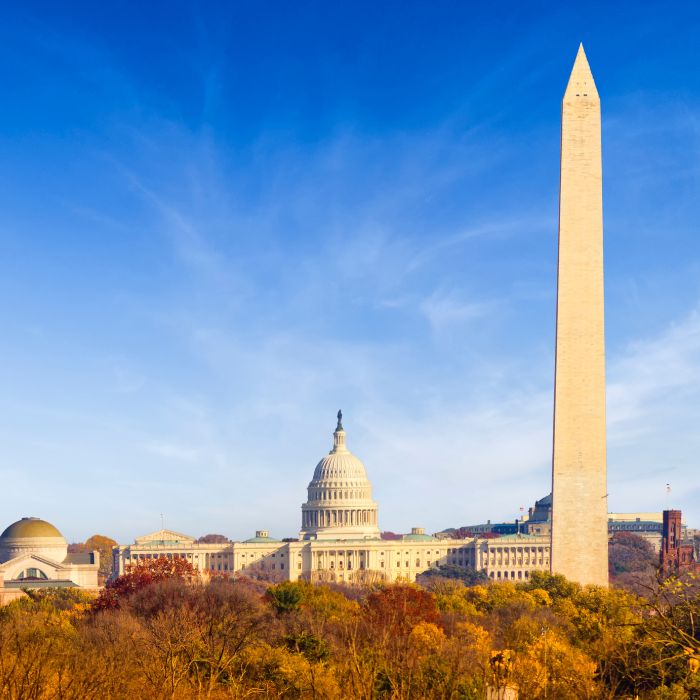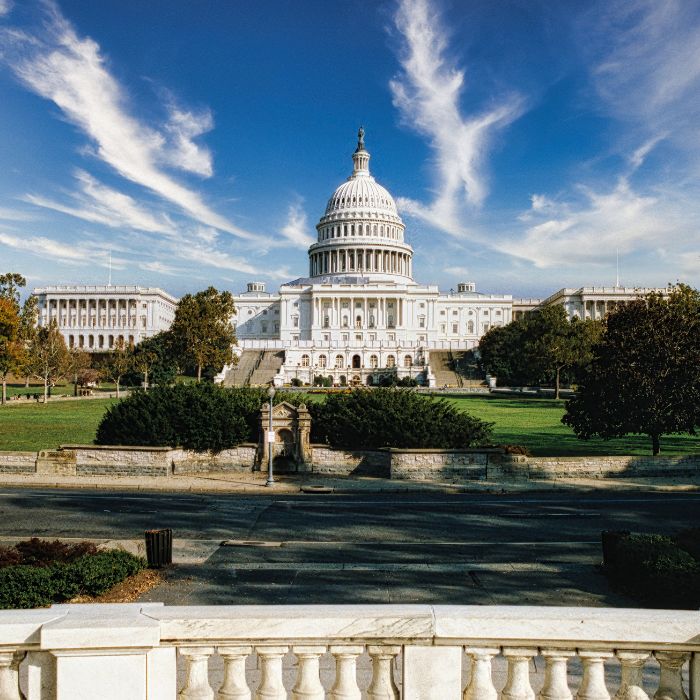EB-5 Remains the Fastest Path to US Permanent Residency for Chinese and Indian Nationals Following the October 2024 Visa Bulletin
September 17, 2024

Country / Territory
Related contacts
Related offices
Related contacts
Related insights
Related offices
Related contacts
Related insights
Related offices
By: Rahul Soni, Xiaodan Song
The release of the October Visa Bulletin marks the beginning of the government’s fiscal year. Immigration practitioners anxiously await its publication as it sets the stage for the new year and what may be expected. The October 2024 Visa Bulletin was just recently released and has reaffirmed that the EB-5 Immigrant Investor Program remains the fastest route to U.S. permanent residency for investors born in countries with significant visa backlogs, such as China and India.
Visa Backlogs for China and India: A Continuing Challenge
For years, Chinese and Indian nationals have faced long wait times to obtain U.S. green cards due to high demand and the per-country visa caps. The employment-based visa categories, particularly the EB-2 and EB-3 categories, have been significantly backlogged for these countries.
The October 2024 Visa Bulletin continues to reflect these severe backlogs:
- The final action cutoff date for EB-1 China will advance by one week, to November 8, 2022, and India will remain at February 1, 2022.
- The final action cutoff date for EB-2 China will advance by three weeks, to March 22, 2020, and India will remain at July 15, 2012.
- The final action cutoff date for EB-3 China will retrogress by five months, to April 1, 2020, and India will advance by one week, to November 1, 2012.
The retrogression for China in the EB-3 category is quite unexpected as the new fiscal year is just beginning. This signals a very challenging year ahead and individuals impacted by the retrogression may want to consider alternative, faster green card options, such as the EB-5 program.
The Strategic Advantages of EB-5 Regional Center Program
When Congress reauthorized the EB-5 Regional Center Program in March 2022, a portion of EB-5 visas was set aside specifically for investments in Targeted Employment Areas (TEAs), which include rural areas, high-unemployment areas, and infrastructure projects. Despite increasing demand, these set-aside categories will remain current under October 2024 Visa Bulletin.
For Chinese and Indian nationals, the EB-5 Regional Center Program presents clear strategic advantages:
- No Employer Sponsorship Required: For individuals without a job offer or those waiting for their employer-sponsored EB-2 or EB-3 priority date to become current, the EB-5 program offers an independent pathway to a green card.
- Fast Processing Times and No Backlogs: Even compared to other self-sponsored options, such as EB-1A or EB-2 NIW, the EB-5 program stands out as the fastest and most straightforward choice for Chinese and Indian nationals without backlog delays.
- Concurrent Filing Option: Chinese and Indian nationals in the U.S. on a valid non-immigrant visa, such as F-1, H-1B, or L-1, can simultaneously file their EB-5 and adjustment of status applications. Currently, the EB-5 regional center program in the set-aside categories is the only employment-based visa category that allows concurrent filing for Chinese and Indian nationals. This allows investors to obtain a five-year work authorization card (EAD) and international travel permit (Advance Parole) while their green card application is pending. This option is particularly beneficial for foreign students, enabling them to bypass the H-1B lottery for work authorization. It also provides added security for individuals on employer-sponsored visas, such as H-1B or L-1, by ensuring continued work authorization, which adds considerable peace-of-mind in the event of job loss or to simplify changing employer.
Need to Know More?
With the increasing demand for these EB-5 set-aside categories, Chinese and Indian investors who believe they qualify for the EB-5 program should seek guidance from immigration professionals who can help guide them through the complex process.
For more information about EB-5 regional center program, please contact Partner Rahul Soni at [email protected] and Senior Associate Xiaodan (Susan) Song at [email protected].
Please also refer to our previous resources, Exploring Green Card Options Without Employer Sponsorship: EB-1A, EB-2 NIW, and EB-5 for insights on other self-sponsored green card options, and Understanding the Differences Between EB-5 Rural Projects and High-Unemployment Projects to better understand the distinctions between rural and high-unemployment projects.
This blog was published on September 17, 2024, and due to the circumstances, there are frequent changes. To keep up to date with all the latest updates on global immigration, please subscribe to our alerts and follow us on LinkedIn, X, Facebook and Instagram.
Country / Territory
Related contacts
Related offices
Related contacts
Related insights
Related offices
Related contacts
Related insights
Related offices
Explore more at Fragomen

Media mentions
Partner Jill Bloom explains how the new wage-based H-1B selection rule may influence hiring decisions and prompt employers to reassess workforce planning and explore alternative visa options.

Media mentions
Partner K. Edward Raleigh discusses how companies are rethinking their H-1B strategies amid evolving policies.

Awards
Senior Counsel Mitch Wexler is recognized by EB5 Investors Magazine as a 2025 Top 25 award recipient, reflecting leadership and long-standing impact in the global investment immigration space.

Blog post
Partners Isha Atassi and Rahul Soni outline key considerations across the EB-5 Immigrant Investor Program and the US Gold Card, comparing eligibility, investment structures and risk factors for high-net-worth individuals from the Middle East seeking US permanent residence.

Media mentions
Partner K. Edward Raleigh commented on proposed changes to US entry requirements.

Video
Business Immigration Consultant Marisa Gizzi from Fragomen explains everything about the Schengen C Visa: who needs it, how to apply and key travel tips to stay compliant in the Schengen Area.

Media mentions
Partner Rick Lamanna discussed Canada’s $1B plan to attract global researchers.

Blog post
Manager Alex Hood, Senior Associate Kimberley Ong and Immigration Paralegal Ataa Rajput explain the final extension and settlement deadlines for UK Tier 1 Investor visa holders and outline who can still qualify and why early action is essential.

Media mentions
Partner K. Edward Raleigh on how the $100K H‑1B fee factors into hiring international talent.

Media mentions
Managing Director Magdalene Tennant and Director Kitty Lo highlight Hong Kong as an attractive destination for global investors.

Blog post
IPM Business Process Manager Hazel Yaman outlines key visa, work authorisation and border considerations for athletes, media, event staff and spectators travelling to Italy for the Milan–Cortina 2026 Olympic and Paralympic Winter Games, including the impact of the EU’s new Entry/Exit System.

Media mentions
Corporate Services Director Elena Caron highlights key considerations for UK nationals moving to the UAE.

Media mentions
Partner Jill Bloom explains how the new wage-based H-1B selection rule may influence hiring decisions and prompt employers to reassess workforce planning and explore alternative visa options.

Media mentions
Partner K. Edward Raleigh discusses how companies are rethinking their H-1B strategies amid evolving policies.

Awards
Senior Counsel Mitch Wexler is recognized by EB5 Investors Magazine as a 2025 Top 25 award recipient, reflecting leadership and long-standing impact in the global investment immigration space.

Blog post
Partners Isha Atassi and Rahul Soni outline key considerations across the EB-5 Immigrant Investor Program and the US Gold Card, comparing eligibility, investment structures and risk factors for high-net-worth individuals from the Middle East seeking US permanent residence.

Media mentions
Partner K. Edward Raleigh commented on proposed changes to US entry requirements.

Video
Business Immigration Consultant Marisa Gizzi from Fragomen explains everything about the Schengen C Visa: who needs it, how to apply and key travel tips to stay compliant in the Schengen Area.

Media mentions
Partner Rick Lamanna discussed Canada’s $1B plan to attract global researchers.

Blog post
Manager Alex Hood, Senior Associate Kimberley Ong and Immigration Paralegal Ataa Rajput explain the final extension and settlement deadlines for UK Tier 1 Investor visa holders and outline who can still qualify and why early action is essential.

Media mentions
Partner K. Edward Raleigh on how the $100K H‑1B fee factors into hiring international talent.

Media mentions
Managing Director Magdalene Tennant and Director Kitty Lo highlight Hong Kong as an attractive destination for global investors.

Blog post
IPM Business Process Manager Hazel Yaman outlines key visa, work authorisation and border considerations for athletes, media, event staff and spectators travelling to Italy for the Milan–Cortina 2026 Olympic and Paralympic Winter Games, including the impact of the EU’s new Entry/Exit System.

Media mentions
Corporate Services Director Elena Caron highlights key considerations for UK nationals moving to the UAE.



